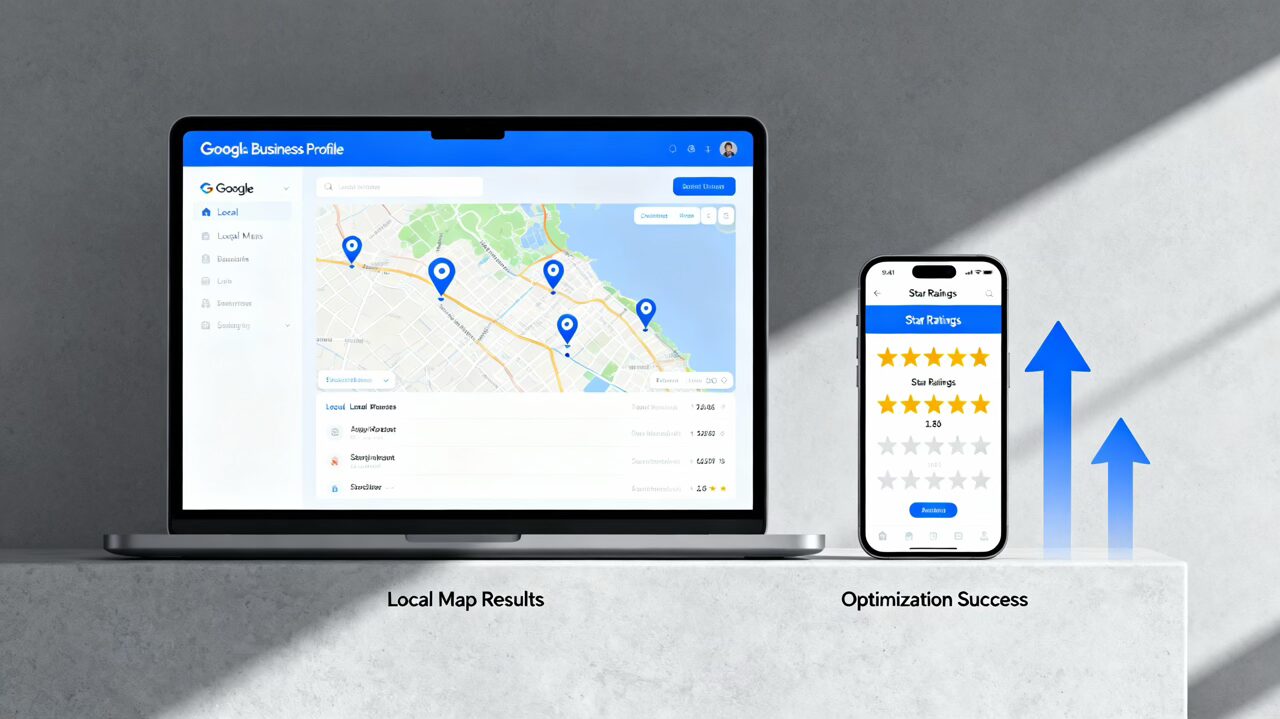In today’s world, having a well-defined content strategy is crucial for businesses of all sizes.
A content strategy is a plan that outlines how a company will create, distribute, and manage its content to achieve specific business goals. It involves understanding your target audience, defining your brand’s voice and messaging, and creating high-quality content that resonates with your audience.
One of the key benefits of having a well-defined content strategy is increased brand awareness.
By consistently creating and distributing valuable content, you can establish your brand as a thought leader in your industry and build trust with your audience. This can lead to increased visibility, website traffic, and ultimately, more customers.
Another benefit of a content strategy is increased customer engagement.
When you create content that is relevant, valuable, and engaging, you can capture the attention of your target audience and encourage them to interact with your brand. This can include commenting on blog posts, sharing content on social media, or signing up for your email newsletter.
A well-executed content strategy can generate leads for your business.
By creating content that addresses the pain points and challenges of your target audience, you can attract qualified leads who are interested in your products or services. This can help you build a pipeline of potential customers and drive revenue growth.
Key Takeaways
- A well-defined content strategy is crucial for any brand’s success.
- Defining your brand’s voice and messaging is the first step towards creating a content strategy.
- Conducting a content audit and identifying your target audience helps in crafting a comprehensive content plan.
- Content creation requires following best practices and tips to engage your audience effectively.
- Leveraging social media and other channels, maximizing visibility on search engines, and reaching your target audience are essential for content marketing success.
Defining Your Brand’s Voice and Messaging
Having a consistent brand voice and messaging across all content channels is essential for building brand recognition and establishing a strong brand identity.
Your brand voice is the tone and style in which you communicate with your audience, while your messaging is the core values and unique selling proposition that sets your brand apart from competitors.

To define your brand’s voice and messaging, start by identifying your brand values.
What does your brand stand for?
What are the key messages you want to convey to your audience?
Understanding your brand values will help you develop a consistent tone and style that aligns with your brand identity.
Consider your target audience.
By understanding your audience, you can tailor your brand voice and messaging to resonate with them.
Who are they?
What are their needs and pain points?
For example, if your target audience is millennials, you may want to adopt a more casual and conversational tone, while if your audience is professionals in a specific industry, you may want to use a more formal and authoritative tone.
Identify your unique selling proposition (USP).
What makes your brand different from competitors?
What value do you offer to your customers?
By clearly defining your USP, you can create messaging that highlights the benefits of choosing your brand over others.
Conducting a Content Audit and Identifying Your Target Audience
Before creating a content strategy, it’s important to conduct a content audit to assess the effectiveness of your current content and identify gaps and opportunities.
A content audit involves analyzing all of your existing content assets, such as blog posts, social media posts, videos, and whitepapers.
During the content audit, evaluate the performance of each piece of content. Look at metrics such as page views, engagement rates, and conversions to determine which pieces of content are resonating with your audience and driving results.
This will help you identify the types of content that are most effective for your brand.
In addition to evaluating the performance of your existing content, it’s important to identify your target audience.
Your target audience is the group of people who are most likely to be interested in your products or services. To identify your target audience, analyze customer data such as demographics, interests, and purchasing behavior.
You can also conduct surveys or interviews with existing customers to gather insights about their needs and preferences.
Additionally, research industry trends and competitor analysis to understand the broader market landscape. By understanding your target audience, you can create content that is tailored to their needs and interests.
Crafting a Comprehensive Content Plan
| Metrics | Description |
|---|---|
| Content Goals | The specific objectives that the content plan aims to achieve. |
| Target Audience | The group of people that the content plan is intended to reach and engage. |
| Content Types | The different formats and types of content that will be included in the plan. |
| Content Themes | The overarching topics or themes that the content will focus on. |
| Content Calendar | The schedule for when each piece of content will be created and published. |
| Content Distribution | The channels and methods that will be used to distribute the content to the target audience. |
| Content Performance | The metrics that will be used to measure the success of the content plan, such as engagement, traffic, and conversions. |
Once you have defined your brand’s voice and messaging and identified your target audience, it’s time to craft a comprehensive content plan.
A content plan outlines the key elements of your content strategy, including your content goals, topics, formats, and distribution channels.
Set clear and measurable content goals.
What do you want to achieve with your content?
Do you want to increase website traffic, generate leads, or improve customer engagement?
By setting specific goals, you can align your content strategy with your overall business objectives.
Identify the topics that are most relevant to your target audience.
What are their pain points and challenges?
What information or solutions can you provide to help them?
By creating content that addresses these topics, you can position your brand as a trusted resource and attract qualified leads.
Consider the different formats of content that you can create.
This can include blog posts, videos, infographics, podcasts, and more.
Different formats appeal to different types of audiences, so it’s important to diversify your content to reach a wider audience.
Finally, determine the distribution channels that you will use to distribute and promote your content. This can include your website, blog, social media platforms, email newsletters, and more.
By leveraging multiple channels, you can reach a larger audience and maximize the impact of your content.
Content Creation: Tips and Best Practices
Creating high-quality content is essential for engaging your target audience and driving results. Here are some tips and best practices for creating compelling content:
- Use storytelling: Storytelling is a powerful tool for capturing the attention of your audience and creating an emotional connection. Use storytelling techniques to make your content more engaging and memorable.
- Incorporate visuals: Visuals such as images, videos, and infographics can enhance the impact of your content and make it more shareable. Use high-quality visuals that are relevant to your content to grab the attention of your audience.
- Optimize for mobile devices: With the increasing use of smartphones and tablets, it’s important to optimize your content for mobile devices. Make sure your website and content are mobile-friendly and load quickly on mobile devices.
- Provide value: Your content should provide value to your audience by addressing their needs and providing solutions to their problems. Focus on creating content that is informative, educational, or entertaining.
- Be consistent: Consistency is key when it comes to content creation. Create a content calendar and stick to a regular publishing schedule to keep your audience engaged and build trust with your brand.
SEO-Driven Content: Maximizing Your Visibility on Search Engines
Creating SEO-driven content is essential for improving your visibility on search engines and attracting organic traffic. SEO stands for search engine optimization and involves optimizing your content to rank higher in search engine results pages (SERPs).
To create SEO-driven content, start by conducting keyword research.
Keywords are the words or phrases that people use to search for information on search engines. By identifying the keywords that are most relevant to your target audience, you can optimize your content to rank higher for those keywords.
Once you have identified the keywords, incorporate them into your content in a natural and organic way. =
This can include using them in your headings, subheadings, and throughout the body of your content. However, it’s important to avoid keyword stuffing, which is the practice of overusing keywords in an attempt to manipulate search engine rankings.
Creating a Topical Map
A must-have if you want to easily start crafting SEO-Driven content is to first create a Topical Map. A Topical Map is a structured outline or diagram that organizes the main topics, subtopics, and keywords related to a specific subject. It’s a strategic tool used in content planning to ensure that the content created is comprehensive, relevant, and optimized for search engines.
In this article we explain how to use ChatGPT to create a perfect Topical Map for your business, this will also include most of your keyword research as well!
In addition to keywords and a topical map, there are other SEO factors that you should consider when creating content.
This includes writing compelling meta descriptions, using internal linking to improve website navigation, and optimizing your images with alt tags. We recommend our article that has 17 Key Strategies to Improve Your Google Ranking.
Content Marketing: Leveraging Social Media and Other Channels

Content marketing is the process of promoting your content and reaching your target audience through various channels.
Social media platforms such as Facebook, Instagram, Twitter, and LinkedIn are powerful tools for distributing and promoting your content.
To leverage social media for content marketing, start by identifying the platforms that are most relevant to your target audience.
For example, if you are targeting a younger audience, platforms like Instagram and TikTok may be more effective, while if you are targeting professionals, LinkedIn may be the best choice.
Once you have identified the platforms, create a social media strategy that outlines how you will distribute and promote your content on each platform.
This can include creating engaging social media posts, using relevant hashtags, collaborating with influencers, and running paid campaigns.
In addition to social media, there are other channels that you can leverage for content marketing.
This can include email marketing, guest blogging, content syndication, and more. By diversifying your distribution channels, you can reach a wider audience and increase the visibility of your content.
Content Distribution: Reaching Your Target Audience
Having a distribution strategy is essential for reaching your target audience and maximizing the impact of your content. Here are some tips for distributing your content across different channels:
- Email marketing: Build an email list of subscribers who are interested in your content and send them regular newsletters with links to your latest blog posts or other content.
- Guest blogging: Write guest posts for other websites or blogs in your industry to reach a wider audience and build backlinks to your own website.
- Content syndication: Syndicate your content on platforms such as Medium or LinkedIn Pulse to reach a larger audience and increase the visibility of your brand.
- Influencer collaborations: Collaborate with influencers in your industry to promote your content to their followers and increase brand awareness.
- Paid campaigns: Run paid campaigns on platforms such as Google Ads or social media platforms to promote your content to a targeted audience.
By diversifying your distribution channels, you can reach a wider audience and increase the visibility of your content.
Content Strategy for Startups: Building a Strong Foundation
For startups, building a strong content strategy foundation is essential for establishing a strong brand presence and attracting customers. Here are some tips and best practices for startups:
- Define your brand voice: Clearly define your brand’s voice and messaging to establish a consistent tone and style across all content channels.
- Conduct market research: Understand your target audience, their needs, and preferences through market research. This will help you create content that resonates with them.
- Set realistic goals: Set realistic goals for your content strategy based on your resources and business objectives. Start small and gradually scale your efforts as your business grows.
- Create a scalable strategy: Build a content strategy that is scalable and flexible to adapt to changing business needs. This will allow you to adjust your strategy as your startup evolves.
- Measure and analyze: Use analytics tools to measure the performance of your content and track key performance indicators (KPIs) such as website traffic, engagement rates, and conversions. This will help you identify what is working and what needs improvement.
Content Strategy for Small Businesses: Scaling Your Efforts and Measuring Success
For small businesses, scaling content efforts and measuring the success of their content strategy is crucial for long-term success. Here are some tips and best practices for small businesses:
- Outsource content creation: Consider outsourcing content creation to freelancers or agencies to scale your content efforts without overwhelming your internal resources.
- Use analytics tools: Utilize analytics tools such as Google Analytics or social media analytics to measure the performance of your content and track key metrics.
- Track key performance indicators (KPIs): Identify the KPIs that are most relevant to your business goals, such as website traffic, lead generation, or customer engagement. Regularly track these KPIs to measure the success of your content strategy.
- Continuously refine and optimize: Continuously refine and optimize your content strategy based on data and insights. Experiment with different types of content, distribution channels, and messaging to find what works best for your business.
- Stay up-to-date with industry trends: Stay informed about the latest industry trends and best practices in content marketing. This will help you stay ahead of the competition and adapt your strategy to changing market conditions.
In conclusion, a well-defined content strategy is essential for businesses of all sizes. It helps increase brand awareness, customer engagement, and lead generation. By defining your brand’s voice and messaging, conducting a content audit, crafting a comprehensive content plan, creating high-quality content, leveraging social media and other channels, creating SEO-driven content, distributing your content effectively, and continuously refining and optimizing your strategy, you can build a strong foundation for success. Whether you are a startup or a small business, implementing these tips and best practices will help you achieve long-term success with your content strategy.
If you’re looking to boost your online presence, you won’t want to miss this article on how Google’s content update can supercharge your online presence.
With Google being the dominant search engine, understanding how their algorithm works and leveraging it to your advantage is crucial. This article dives deep into the strategies and techniques you can implement to optimize your content and improve your visibility on Google. Check it out here.
Frequently Asked Questions Regarding Content Creation
What is a content strategy?
A content strategy is a plan that outlines how a company or organization will create, publish, and manage content to achieve specific business goals.
Why is a content strategy important?
A content strategy is important because it helps ensure that the content a company creates is aligned with its business goals, is relevant to its target audience, and is delivered in a consistent and effective manner.
What are the key components of a content strategy?
The key components of a content strategy include defining the target audience, identifying business goals, creating a content plan, establishing a content creation process, and measuring the effectiveness of the content.
How do you define a target audience?
Defining a target audience involves identifying the characteristics of the people or groups who are most likely to be interested in a company’s products or services. This includes factors such as age, gender, location, interests, and behaviors.
What are some common types of content?
Common types of content include blog posts, articles, videos, infographics, social media posts, podcasts, and whitepapers.
How do you measure the effectiveness of content?
The effectiveness of content can be measured using metrics such as website traffic, engagement rates, social media shares, lead generation, and sales conversions. These metrics can help companies determine which types of content are resonating with their target audience and adjust their content strategy accordingly.
Looking for Help for Your Content Strategy?
Book a free call with us to see if you’re a good fit for us to help your business pump out strategic and helpful content.
Get Started









